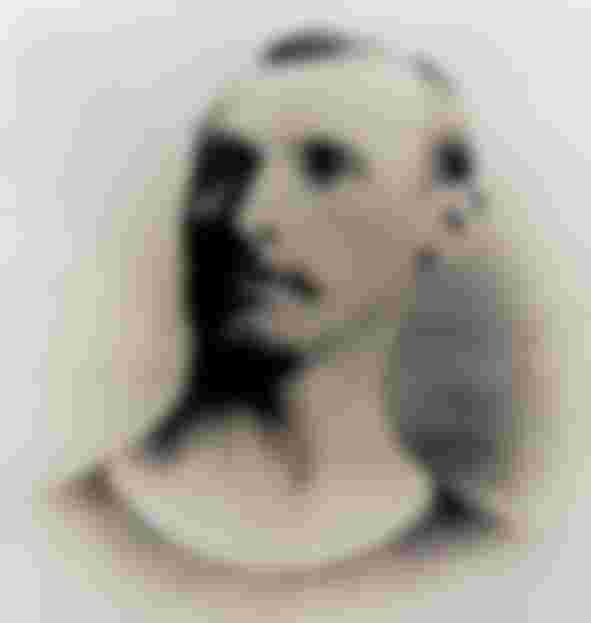
This is what known to the world as the first bicycle which appeared in public on 12 June 1817. A local aristocrat and a German Inventor named Baron Karl von Drais (32 at that time) show up to the public, spinning around Mannheim on his 'dandyhorse' which has no pedal, is made of a wooden frame, two wheels and an upholstered armrest. His bicycle was known as the "swift walker" which hits the road in 1817.
Let's see what Ulster and Ireland early bicycles like and those people to thank for this great invention.
R.J. Mecredy - Cycling and Writing

Feats
Richard James Mecredy was born in Ballinasloe, County Galway in 1861 and was educated at Portora Royal School, Enniskillen. His first cycle race was at Monasterevin in 1883 and he went on to become a successful racing cyclist and Irish champion tricycle racer. He did much to promote cycling tourism in Ireland, publishing maps for cyclists showing scenic routes and steep hills. He also invented the game of bicycle polo in 1891.
Fortunes
Although RJ Mecredy never made his fortune, he is recognized as having made significant contributions to the worlds of cycling and motoring through his campaigning and publications such as The Irish Cyclist and Motor News. 'The Father of Irish Motoring' is what he is often referred to.
William Hume and the Sausage Tyres

Feats
This Belfast-built Edlin safety bicycle dating from 1889 is one of the first in the world to be fitted with pneumatic tyres. The man who developed the pneumatic tyre was John Boyd Dunlop, a Belfast vet. Dunlop persuaded William (Willie) Hume, Captain of the Belfast Cruisers Cycling Club to return to racing and ride his new invention at the first public appearance in the competition. The race was held at the Queen's College Athletic Club Sports Day in the grounds of the North of Ireland Cricket Club, Ormeau Road, Belfast on 18th May 1889.
On the day people laughed at the bicycle's "sausage" tyres until Willie won all four races. A few weeks later he travelled to Liverpool and became the first person to win a race in pneumatic tyres in England.

Fortunes
This bicycle was owned by Arthur du Cros from Dublin. Arthur was among those beaten on this first occasion by William Hume on the new tyres. Despite this, the du Cros family recognised the potential of the pneumatic tyre and subsequently exploited Dunlop's innovation, building a successful global industry and making Dunlop a household name.
Arthur du Cros later became the Member of Parliament for Hastings and was opposed to giving the vote to women. In April 1913, a suffragette named Kitty Marion burnt his East Sussex home to the ground in protest.
Woman's Bicycle

Feats
From the 1890s it became acceptable for women to ride bicycles. For those lucky enough to have a bicycle, this changed their lives in subtle but significant ways. Here, at last, was a form of transport which did not require them to have the strength of a man. Here also was the chance to escape tight corsets and very long skirts in favour of more practical clothing, such as bloomers and divided skirts. Young ladies also relished the opportunity to escape from their chaperones and cycle either alone or with friends.

Fortunes
The role of the bicycle in the struggle for women's rights has been underestimated. As Susan B. Anthony, the American campaigner for women's rights said in 1896:
"The bicycle has done more for the emancipation of women more than anything else in the world."
Opel German Bicycle

Opel was founded in 1884 and was one of the earliest German bicycle companies.
Feats
This bicycle was used by the German army in World War I (1914-1918). Unusually, springs were used for its tyres, as there was a shortage of rubber at the time. Bicycle were a very important means of transport during the war, enabling large numbers of troops to cover longer distances than would have been possible on foot. Eight Radfahr-Bataillonen (bicycle battalions) were active within the German army during the war.

Fortunes
The dents on the bicycles show that it had a working life during wartime. It was donated to the Belfast Museum & Art Gallery by the British War Office in 1920, which suggests that it had been seized from the defeated German forces. In 1938, Opel stopped producing bicycles and concentrated on armaments.
John Hanson's 'Round the World' Bicycle

Feats
Between 15 September 1981 and 17 September 1982, John Hanson (born 1953) undertook an epic journey on this Vikings Clubman bicycle, made by Viking Cycles in Londonderry. Accompanied by John Rogers, he travelled across Europe, Asia and North America to raise money for the charity Tearfund. The pair cycled 13,000 miles (21,000 km) in total, averaging 50 miles (81km) per day. They trained little before embarking on the journey, which was planned using a Philips School Atlas.

Fortunes
Just over £54,000 was raised for the charity, which went to help refugees from Northern Thailand who had fled unrest in the neighbouring county of Laos. Despite being robbed at gunpoint in Thailand, suffering from sickness and diarrhoea in India and coming off their bicycles in the United States, the intrepid cyclists enjoyed their journey and felt that it was relatively problem-free. John Hanson wrote a book -Around the World in Cycle Clips: An Eye-opening Journey through Calamities, Curries and Culture Shock (1990) - about their adventures and he remains a keen cyclist.
Transport provide this opportunity for people to go above and beyond their own physical limitation. It's amazing how bicycles change the face of transport and history. Thank you for the amazing people behind this genius invention.










So many bikes this time. I've always been curious how the men rode that large front wheeled bike so comfortably, much more how they reached it 😂😂😂